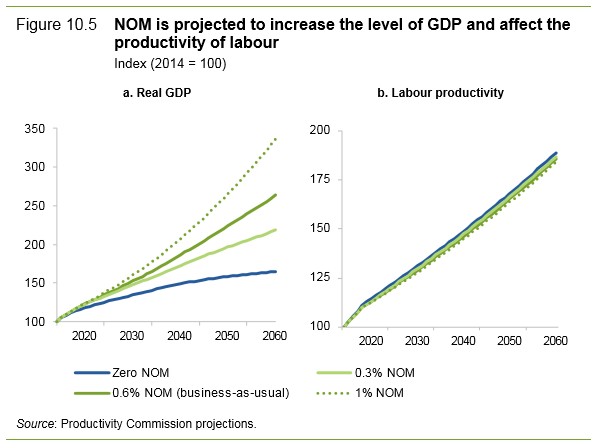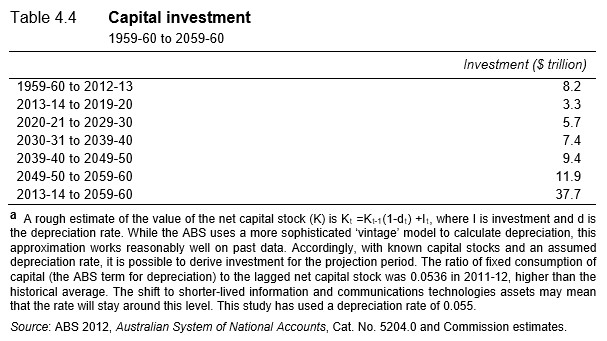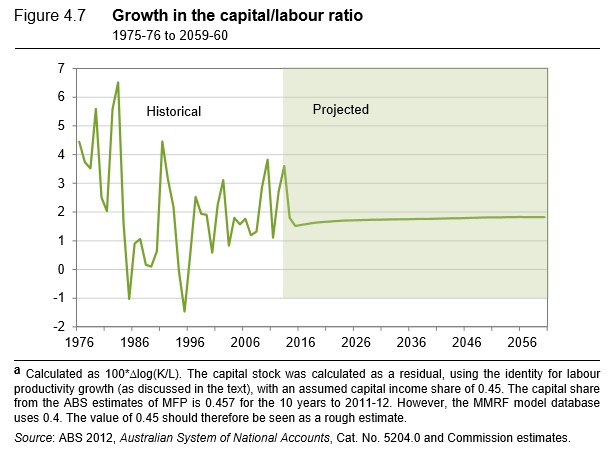Robert Breunig, Professor of Economics at the Australian National University, has penned a piece in The Conversation arguing that immigration has no impact on wages of the incumbent worker population:
…our research shows that the impact of immigration on the labour market in Australia over the last 15 years is negligible.
The notion that immigration impacts wages or employment is largely based on a simplistic analysis of supply and demand. The idea is that immigration increases the supply of labour and, if everything else holds constant, this results in lower wages.
But the world is not this simple.
If the demand for labour is also increasing, then a greater supply of workers might be absorbed without reducing wages or increasing unemployment. Failure to attract new workers to a country could also lead to under-utilisation of capital. Mining equipment, for instance, might sit idle if there are no workers to run the machines. This would reduce economic growth.
But, at the end of the day, the question of whether immigration hurts the wage and employment prospects of in-country workers is an empirical question. So my colleagues, Nathan Deutscher and Hang Thi To, and I decided to investigate…
Let’s look at two groups of Australian workers. The first are young, with five or fewer years of work experience and a high school education. The second group is older, with 21-25 years of work experience and a tertiary education…
We looked at changes in immigration rates into different skill groups in Australia to identify the effects of immigration on the earnings and employment prospects of Australian workers.
Our dataset was made up of data from the Australian Census, the Surveys of Income and Housing (SIH), and the Household Income and Labour Dynamics in Australia (HILDA) Survey.
There are some drawbacks to using these data sets. We are missing migrants who reside in Australia for less than one year and are not picked up by the census, such as backpackers and short-term 457 visa holders. The time period was also one of robust economic growth – we can’t say what would happen with the same level of immigration in a period of much slower economic growth…
Once we controlled for the fact that immigrants to Australia disproportionately flow into high-skill groups with higher wages and other positive outcomes, we found immigration had no impact on the wages of incumbent workers…
Our research only looked at one, very limited, aspect of immigration. Immigrants can also bring cultural and culinary diversity, innovation and creativity. But while employment is only one aspect of the costs and benefits of immigration, it is not as impacted by immigration as we may think.
The final paragraph gives the impression that the ANU academics have a bias towards immigration, given they noted the ‘benefits’ of “cultural and culinary diversity, innovation and creativity”, without also acknowledging the negative externalities from immigration, such as increased traffic congestion, reduced housing affordability, and environmental degradation. This is hardly surprising, given the ANU is a factory for foreign students.
Their modelling also has a clear short-coming in that it only examined labour market outcomes during a period of “robust economic growth”, rather than the situation we have now where immigration remains strong:
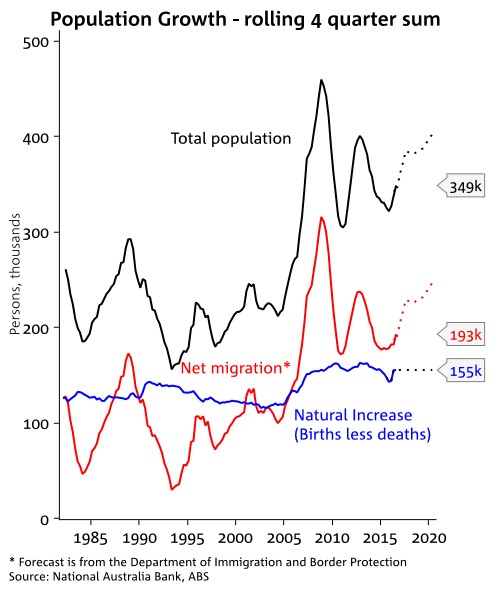
Despite very high (and worsening) labour underutilisation:
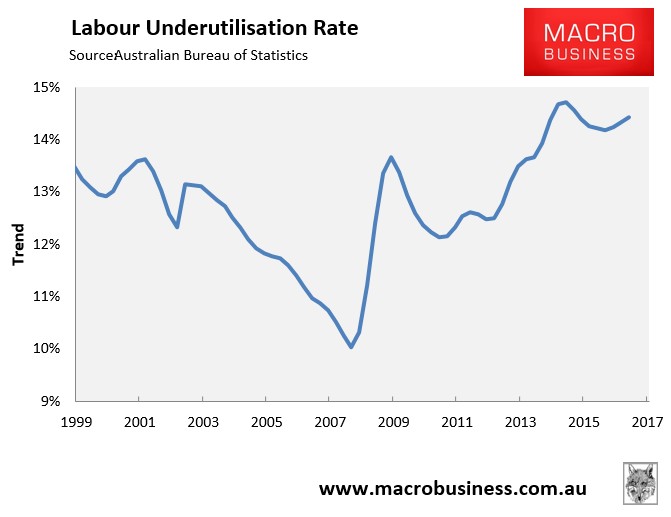
And record low wages growth:
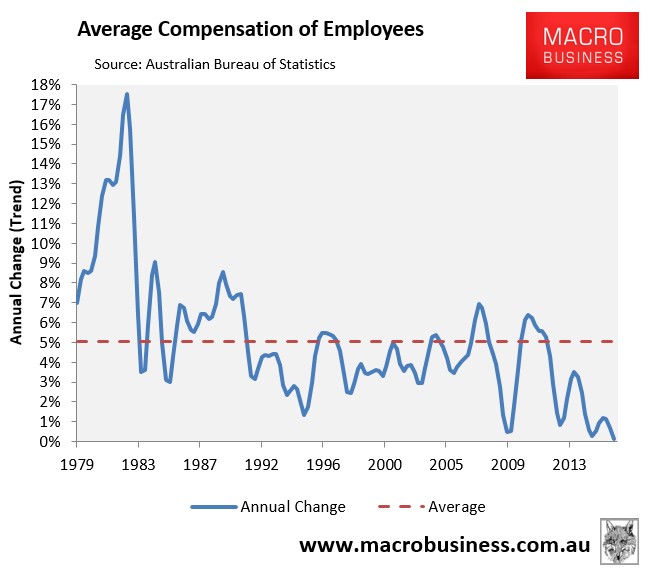
Despite increasing labour productivity:
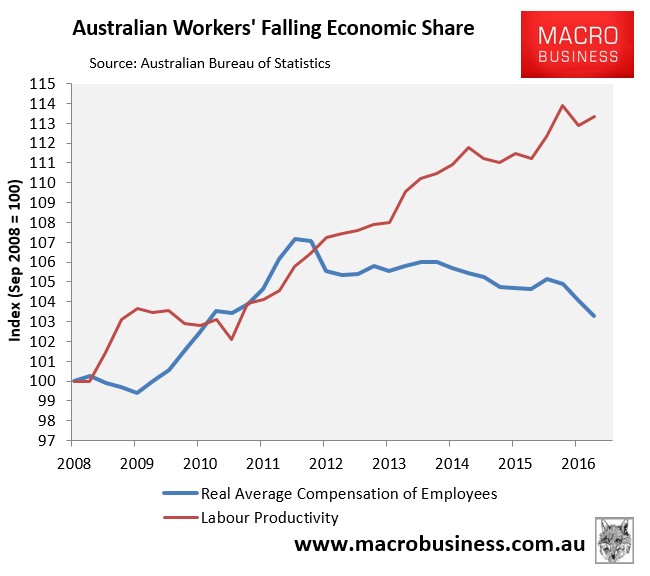
Instead of trusting their modelling, I prefer to go with the Productivity Commission (PC), which has studied the economic impacts of immigration for well over a decade, and can rightfully be considered an ‘independent umpire’ on the issue.
On the specific issue of whether immigration lowers incumbent workers’ wages, the PC’s view is clear. In 2006, the PC completed a major study on the Economic Impacts of Migration and Population Growth, which modelled the impact of a 50% increase in the level of skilled migration over the 20 years to 2024-25 and found that the benefits from increasing skilled migration accrue to the migrants themselves and wealthy capital owners, whereas existing resident workers are made worse-off. Here’s the money quote:
The increase in labour supply causes the labour / capita ratio to rise and the terms of trade to fall. This generates a negative deviation in the average real wage. By 2025 the deviation in the real wage is –1.7 per cent…
Broadly, incumbent workers lose from the policy, while incumbent capital owners gain. At a 5 per cent discount rate, the net present value of per capita incumbent wage income losses over the period 2005 – 2025 is $1,775. The net present value of per capita incumbent capital income gains is $1,953 per capita…
Owners of capital in the sectors experiencing the largest output gains will, in general, experience the largest gains in capital income. Also, the distribution of capital income is quite concentrated: the capital owned by the wealthiest 10 per cent of the Australian population represents approximately 45 per cent of all household net wealth…
In a similar vein, the PC’s most recent modelling found that labour productivity is forecast to decrease under current immigration settings, as are real wages, versus a zero net overseas migration (NOM) baseline:
Compared to the business-as-usual case, labour productivity is projected to be higher under the hypothetical zero NOM case — by around 2 per cent by 2060 (figure 10.5, panel b). The higher labour productivity is reflected in higher real wage receipts by the workforce in the zero NOM case.
The PC has, of course, also found significant negative externalities from immigration, which further lowers incumbent residents’ welfare:
…whether migration delivers an overall benefit to the existing Australian community will also depend on other factors, including the distribution of those economic benefits, and the broader impacts of immigration, notably the associated social and environmental impacts…
High rates of immigration put upward pressure on land and housing prices in Australia’s largest cities. Upward pressures are exacerbated by the persistent failure of successive state, territory and local governments to implement sound urban planning and zoning policies…
Urban population growth puts pressure on many environment-related resources and services, such as clean water, air and waste disposal. Managing these pressures requires additional investment, which increases the unit cost of relevant services, such as water supply and waste management. These higher costs are shared by all utility users…
Immigration, as a major source of population growth in Australia, contributes to congestion in the major cities, raising the importance of sound planning and infrastructure investment …governments have not demonstrated a high degree of competence in infrastructure planning and investment. Funding will inevitably be borne by the Australian community either through user-pays fees or general taxation.
Hence, running a high immigration program becomes increasingly costly for existing residents. A classic example is infrastructure, where the PC in 2013 warned that total private and public investment requirements over the next 50 years are estimated to be more than 5 times the cumulative investment made over the last half century:
Australia’s population is projected to increase to more than 38 million by 2060… The likely population growth will place pressure on Australian cities… In response to the significant increase in the size of Australian cities, significant investment in transport and other infrastructure is likely to be required. This is true both within the cities themselves and for the links between regional and major cities. Policies will be needed to reduce congestion problems, and to ensure adequate infrastructure funding and investment efficiency…
Total private and public investment requirements over this 50 year period are estimated to be more than 5 times the cumulative investment made over the last half century, which reveals the importance of an efficient investment environment…
The PC report also warned that without such massive investment, multifactor productivity – the key driver of living standards – would fall:
The implied level of investment to drive such capital accumulation is large — estimated at around $38 trillion dollars over the projection period in constant 2011-12 prices (table 4.4)… Australia will be buying and building a large amount of physical capital. Without the efficient allocation of that capital, the achievable labour productivity growth rate would be considerably lower.
The bottom line is that running a high immigration program requires massive investment and costs a lot, and these costs are borne to a large extent by the incumbent population.
Therefore, if you want wages to be reduced, traffic congestion to get worse, to pay more for utilities and housing, and to see the environment get degraded, then continue with current mass immigration settings. But if you care about maintaining Australian living standards, then immigration needs to be slashed to sensible and sustainable levels.

